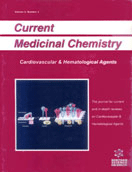Abstract
Homocysteine (Hcy) is a sulphur-containing amino acid product of methionines metabolism. Hyperhomocysteinemia (HHcy) is considered an independent risk factor for cardiovascular (CV) disease, at least in highrisk patients. In fact, evidence indicates that although mild HHcy may be regarded as a minor risk factor for CHD in lowrisk patients, it can play a role in triggering new events in patients with known CHD, also by interacting with the "classical" CV risk factors. This is of much interest because HHcy represents a correctable risk factor, inasmuch vitamin supplementation as has been shown to effectively lower total homocysteine plasma levels (tHcy). While case-control and cross-sectional studies have consistently demonstrated an association of HHcy with CV disease, prospective studies have given conflicting results. Moreover, the effect of the homocysteine-lowering treatment in preventing CV events is still under debate. Thus, it remains unclear which patients should be screened for HHcy and which ones should be treated to lower tHcy. In this paper we shall report and discuss knowledge on the potential role of HHcy in the development of CHD and on the benefits due to tHcy-lowering treatment with vitamins.
Keywords: homocysteine, risk factors, coronary heart disease, folate, vitamin
 3
3













